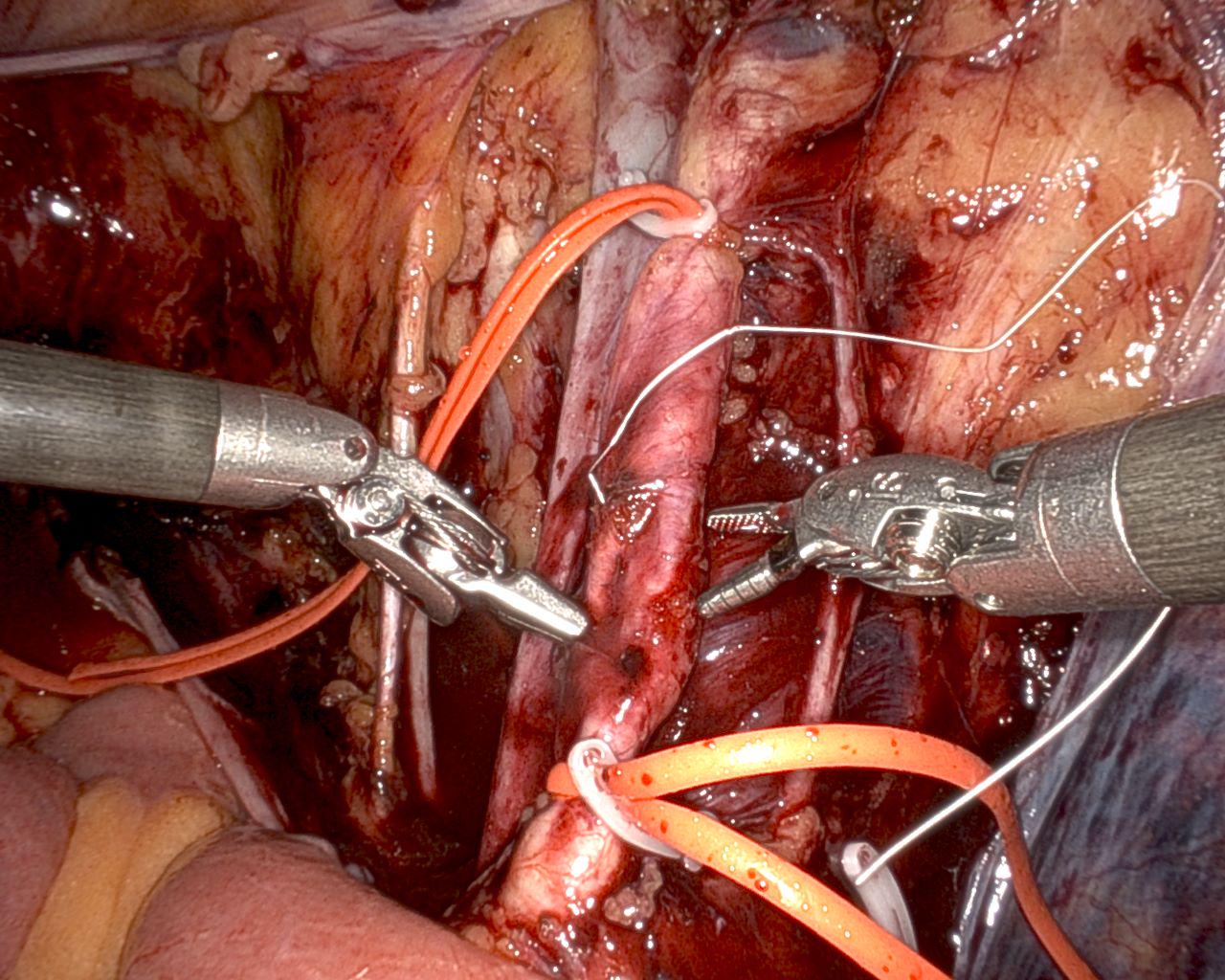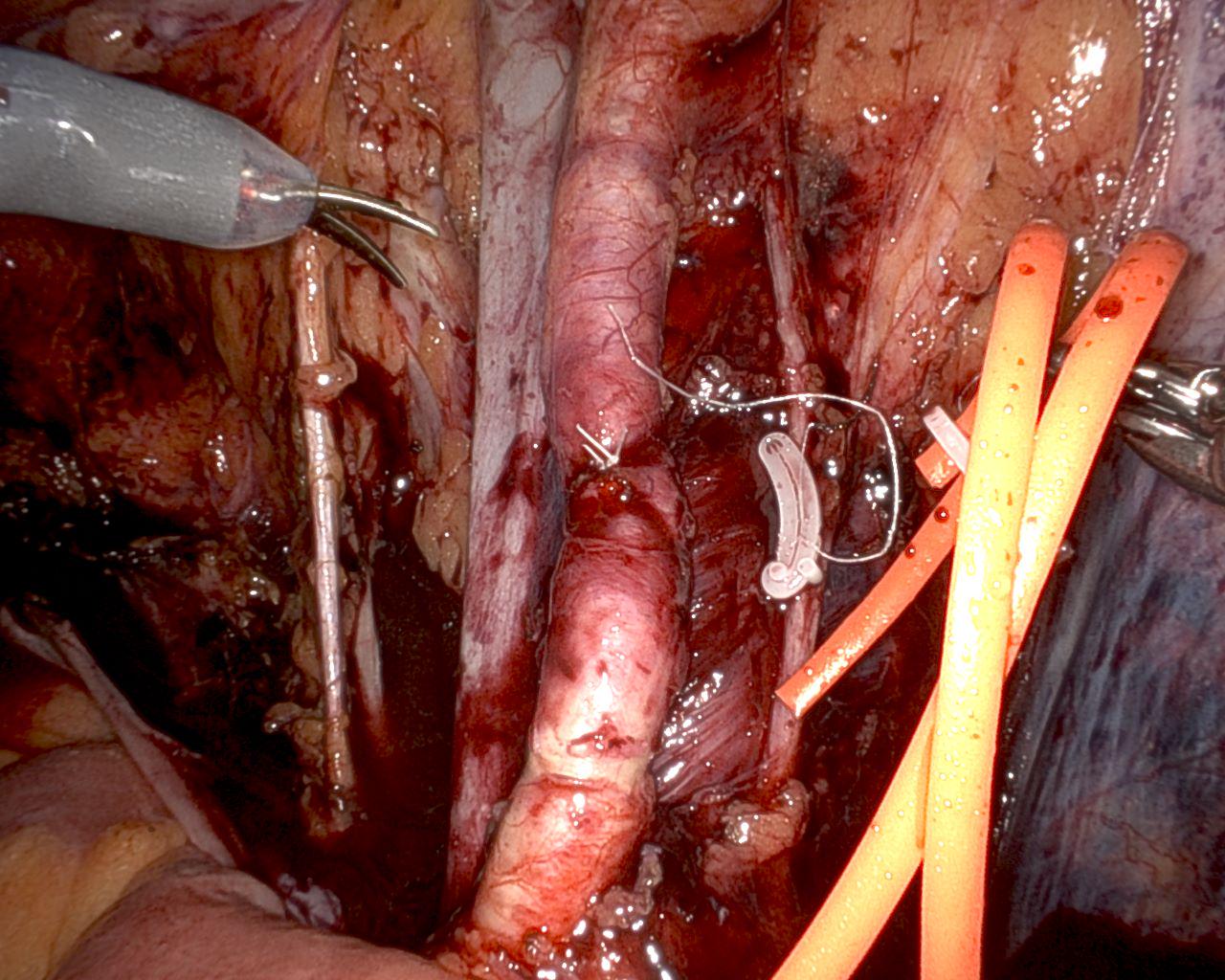DEMOGRAPHICS: Robotic assisted laparoscopic surgery has been adopted by many surgical specialties, but vascular surgery is late to adopt this new technological innovation.
HISTORY: This case demonstrates the technical details and successful outcome of emergent vascular control and repair of an intra-operative arterial injury during a non-vascular case using the DaVinci Robotic Surgery system. There are no prior published case reports of emergent vascular control and repair using robotic assisted laparoscopic surgery platforms.
PLAN: A 77-year-old woman was undergoing a robotic assisted hysterectomy, bilateral salpingo-oophorectomy, bilateral pelvic lymph node dissection, and peritoneal biopsy with gynecologic-oncologic surgeon. Vascular surgery was called emergently to the operating room for an injury to the right External-Iliac Artery (EIA). The gynecologic oncology surgeon had obtained instrument point control over the injury to the right EIA. The DaVinci robotic surgery platform allows one operator to control instruments in 4 surgical ports. The surgeon can control the camera and 2 instruments at a time while the 3rd can be locked in place. Using this system, the fenestrated grasper was used to apply point control on the arteriotomy and was locked in place for temporary hemostatic control. The vascular surgeon then used the other two instruments to control proximal and distal on the injured external iliac artery using a modified Rummel tourniquet using silastic vessel loops, 20 fr red rubber catheter and Weck polymer clips. Once proximal and distal control were achieved the fenestrated grasper could be unlocked, the arteriotomy viewed, and figure of eight stitch was placed using a Goretex suture for a successful repair of the arterial injury.DISCUSSION: Robotic-assisted laparoscopic surgery is growing in popularity across all operative specialties. Vascular injuries in the past may have required emergent conversion to open surgical exposure and repair. This case report is the first to describe an emergent vascular control technique and repair using the robotic assisted laparoscopic platform, harnessing the ability of the robotic arms to allow simultaneous control and repair of arterial injury. 
